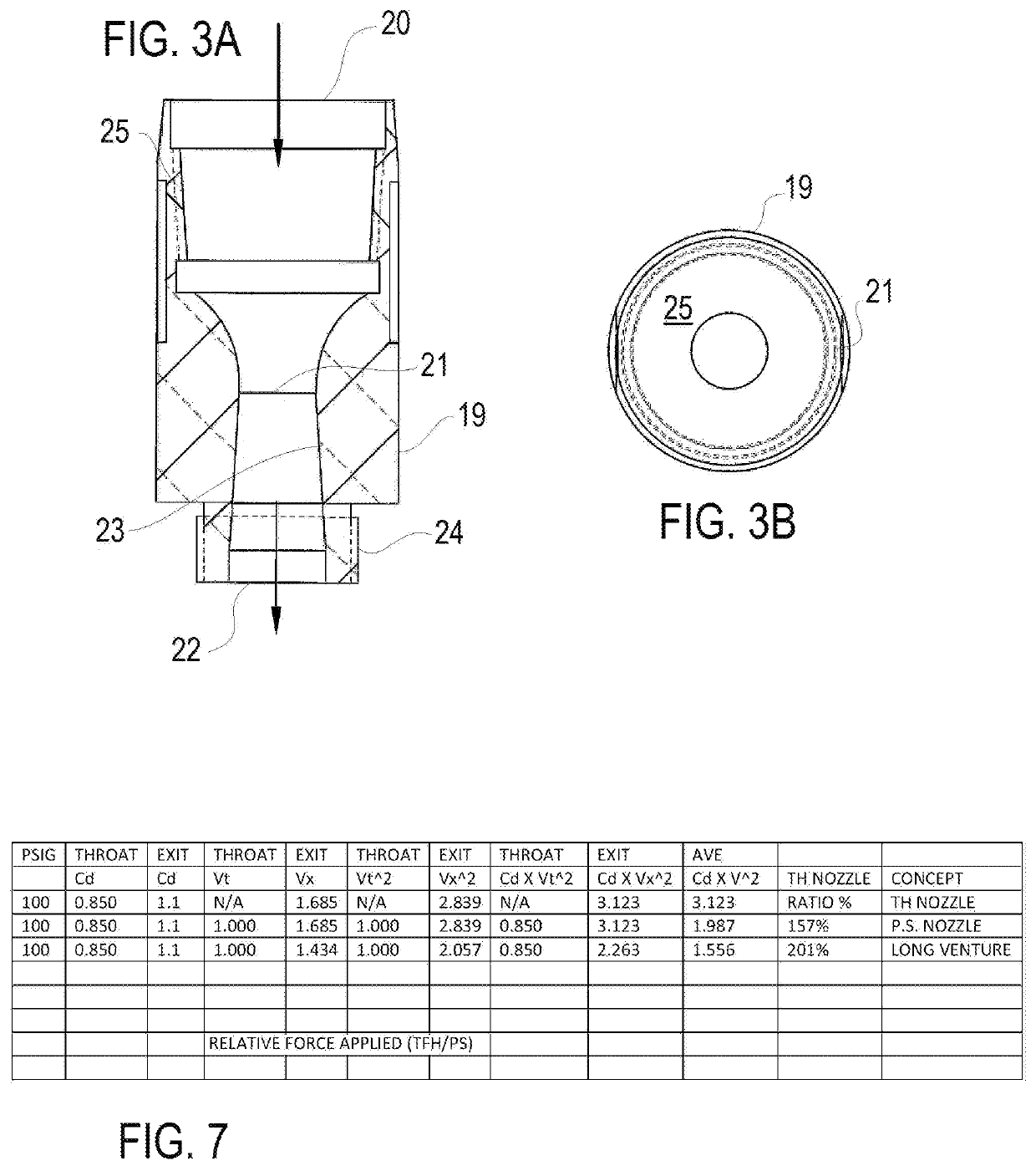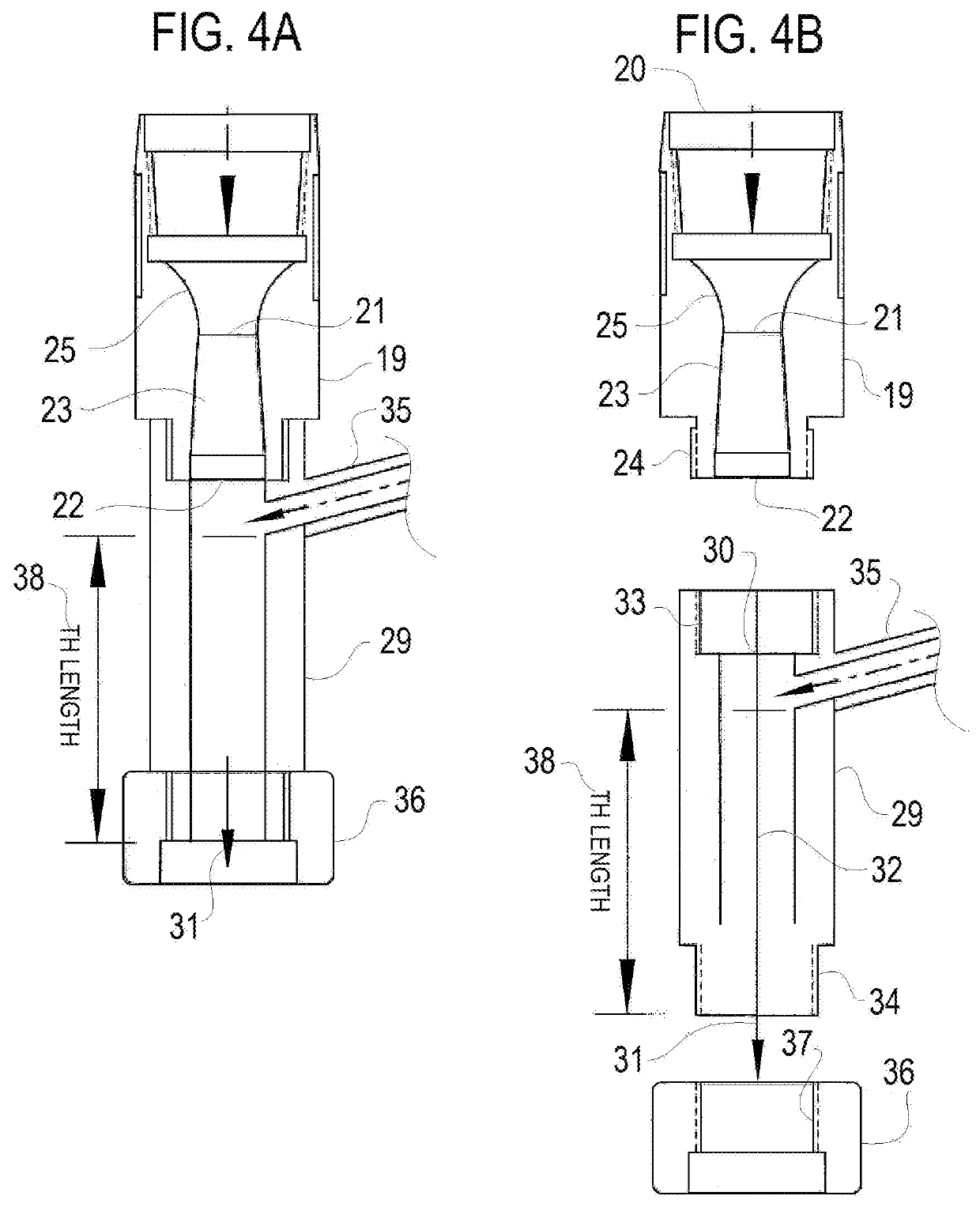Abrasive media blasting method and apparatus
a blasting nozzle and abrasive media technology, applied in the direction of blast guns, metal-working equipment, manufacturing tools, etc., can solve the problems of remarkably inefficient energy transfer, unable to solve at least three of the historic difficulties of these and other shot, sand or hard media blasting nozzles
- Summary
- Abstract
- Description
- Claims
- Application Information
AI Technical Summary
Benefits of technology
Problems solved by technology
Method used
Image
Examples
Embodiment Construction
[0035]Referencing the figures, FIG. 1 is a schematic side section view of a prior art Long Venturi nozzle 1 discussed above, and used herein for comparison. A commercial long venturi nozzle 1 viewed in cross section is shown and has a venturi nozzle entrance 2, a venturi nozzle throat 3 to increase air velocity and a venturi nozzle exit 4, usually larger than the throat, a venturi nozzle expansion 5, and an LV length 6,
[0036]FIG. 2 is a schematic side section view of a prior art P.S. Nozzle 10 discussed above and used herein for comparison. A P.S. nozzle 10 has a P.S. nozzle entrance 11, a P.S. nozzle throat 12, a P.S. nozzle exit 13, a P.S. nozzle expansion 14 and an LP length 15.
[0037]FIGS. 3A and B are a schematic side section and top plan views, respectively, of a supersonic nozzle 19 forming one component of an apparatus for use in abrasive media blasting in accordance with one embodiment of the present invention. The supersonic nozzle 19 has a supersonic nozzle entrance 20, a ...
PUM
| Property | Measurement | Unit |
|---|---|---|
| axial length | aaaaa | aaaaa |
| gravity | aaaaa | aaaaa |
| pressure | aaaaa | aaaaa |
Abstract
Description
Claims
Application Information
 Login to View More
Login to View More - R&D
- Intellectual Property
- Life Sciences
- Materials
- Tech Scout
- Unparalleled Data Quality
- Higher Quality Content
- 60% Fewer Hallucinations
Browse by: Latest US Patents, China's latest patents, Technical Efficacy Thesaurus, Application Domain, Technology Topic, Popular Technical Reports.
© 2025 PatSnap. All rights reserved.Legal|Privacy policy|Modern Slavery Act Transparency Statement|Sitemap|About US| Contact US: help@patsnap.com



